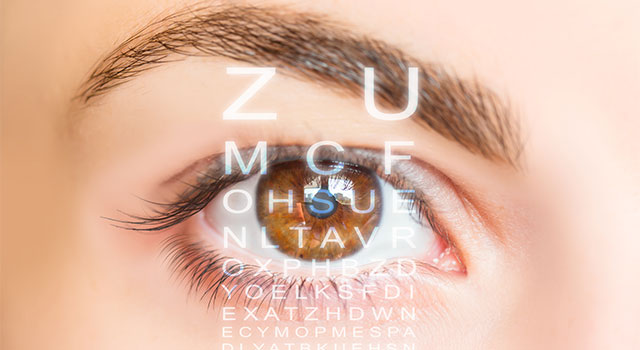Top-Rated Eyecare Near Me: Professional Vision Providers Available
Wiki Article
Comprehending the Numerous Eye Conditions Treated by Specialized Eye Treatment Professionals
In the world of eye care, specialized professionals play a vital function in diagnosing and dealing with a broad array of eye problems. As we get started on this expedition of the various eye conditions attended to by specialized eye treatment experts, it becomes evident that the intricate internet of eye health and wellness holds a myriad of interesting understandings waiting to be revealed.Usual Refractive Errors
Refractive mistakes are typical visual conditions created by a flaw in the eye's capability to correctly concentrate light, resulting in obscured vision. Astigmatism is defined by an irregularly shaped cornea, resulting in distorted or blurred vision at all distances. Presbyopia is an age-related condition where the lens sheds its versatility, making it challenging to focus on close items.These refractive errors can be corrected via numerous techniques, including spectacles, get in touch with lenses, or refractive surgical procedure. Eye care experts play an essential function in identifying and taking care of refractive mistakes to assist individuals accomplish more clear vision and enhance their lifestyle.
Age-Related Eye Conditions
As people age, their eyes might be susceptible to a variety of problems beyond refractive mistakes that can impact their vision and overall ocular wellness. Age-related eye problems are usual and can considerably influence the lifestyle for older grownups. One of one of the most widespread age-related eye problems is age-related macular deterioration (AMD), a disease that triggers central vision loss and can make activities like reading and driving difficult. refractive surgeries in al. Cataracts, one more common condition among older people, create clouding of the eye's natural lens, causing blurred vision. Glaucoma, identified by damages to the optic nerve, is also extra common with age and can result in outer vision loss or loss of sight if left without treatment. Furthermore, presbyopia, a problem where the eye's lens loses adaptability, is a natural component of aging and leads to problem focusing on close things. Regular eye tests with specialized eye treatment professionals are vital for early detection and management of these age-related eye conditions to maintain vision and maintain ocular health and wellness as people age.Vision-Threatening Diseases
Vision-threatening illness incorporate a series of major ocular conditions that have the potential to dramatically influence a person's vision and general visual feature. These illness position a threat of permanent vision loss otherwise immediately identified and dealt with by specialized eye treatment specialists. Some common vision-threatening illness consist of glaucoma, diabetic retinopathy, age-related macular deterioration (AMD), and retinal detachment.Glaucoma is a team of eye problems that harm the optic nerve, commonly because of high intraocular pressure, resulting in peripheral vision loss and potential blindness if left untreated. Diabetic retinopathy is a complication of diabetes that influences blood vessels in the retina, causing vision problems or loss of sight. AMD is a modern problem influencing the macula, resulting in main vision loss. Retinal detachment takes place when the retina separates from its underlying cells, leading to sudden vision loss that requires immediate clinical attention (refractive surgeries in al).
Very early detection, regular eye examinations, and timely treatment are crucial in taking care of vision-threatening diseases to protect vision and preserve high quality of life. Specialized eye care professionals play an essential function in diagnosing, treating, and handling these problems to avoid irreparable vision loss.
Corneal Disorders
Corneal disorders encompass a spectrum of conditions that influence the clear front component of the eye, known as the cornea. Treatment for corneal disorders varies depending on the specific condition however might include medications, call lenses, or in extreme cases, corneal transplants. Routine eye exams are crucial for very early discovery and monitoring of corneal conditions to protect vision and eye wellness.Neurological Eye Problems
Neurological eye problems involve disorders that influence the connection between the eyes and the brain, influencing aesthetic processing and overall eye function. These conditions can manifest in numerous methods, influencing vision, eye motions, and even the sychronisation between the eyes. One common neurological eye problem is optic neuritis, defined by swelling of the optic nerve leading to vision loss, color desaturation, and pain with eye activity.One more significant problem is nystagmus, where the eyes make repetitive, unrestrained motions, influencing visual skill and depth perception. In addition, conditions like amblyopia, frequently described as "careless eye," arise from irregular aesthetic development in very early childhood years, causing lowered vision in one eye.
Neurological eye conditions call for customized care from specialists like neuro-ophthalmologists who have proficiency in both neurology and ophthalmology. Diagnosis usually involves a detailed eye examination, imaging studies, and partnership with specialists to address the underlying neurological issues impacting the aesthetic system. Therapy approaches can include medicine, vision therapy, or in severe cases, surgical treatments to take care of these complex problems efficiently.

Final Thought
To conclude, specialized eye care professionals treat a variety of eye conditions, consisting of typical refractive errors, age-related eye conditions, vision-threatening diseases, corneal disorders, and neurological eye conditions - refractive surgeries in refractive surgeries in al al. By comprehending these various conditions and looking for appropriate treatment from eye care professionals, individuals can keep optimum eye health and vision. It is very important to prioritize normal eye assessments and follow advised therapy strategies to protect and shield one's vision for the futureReport this wiki page